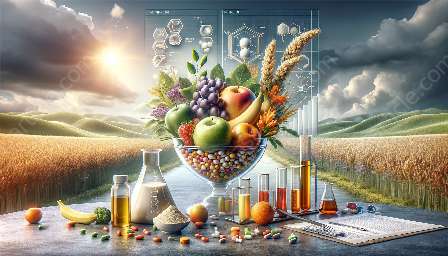When it comes to the fascinating journey of human lactation, understanding the anatomy of the lactating breast is crucial. In this comprehensive topic cluster, we delve into the complex structures and processes involved in lactation, the intricate relationship with nutrition science, and the miraculous phenomenon of breastfeeding.
The Lactating Breast: A Marvel of Nature
The lactating breast is a remarkable organ that undergoes significant physiological changes to support the production and delivery of breast milk. Understanding its anatomy is essential for comprehending human lactation and its role in nourishing infants.
Anatomical Structures of the Lactating Breast
During lactation, the breast comprises various key structures, including:
- Alveoli: These small, grape-like clusters of cells within the breast are responsible for producing milk.
- Milk Ducts: These tubular passages carry milk from the alveoli to the nipple, providing a pathway for milk expulsion.
- Areola: The darkened area surrounding the nipple, rich in sebaceous glands, plays a role in lubricating and protecting the nipple during breastfeeding.
- Nipple: The central projection from which milk is released during nursing.
Physiological Changes in the Lactating Breast
Early in pregnancy, estrogen and progesterone stimulate the development of mammary tissue, preparing the breast for lactation. As pregnancy progresses, the hormone prolactin promotes milk production, while oxytocin facilitates milk ejection. The mammary glands undergo significant expansion, and the production of colostrum, the first milk, begins in the latter stages of pregnancy.
Human Lactation: Nurturing the Newborn
Human lactation, the process of producing and providing breast milk to an infant, is a vital aspect of early nutrition and development. Breastfeeding offers numerous benefits, including immune support, optimal nutrition, and emotional bonding between mother and child.
The Science of Breast Milk
Breast milk is a dynamic fluid that adapts to the changing needs of the growing infant. It contains an array of nutrients, antibodies, and bioactive compounds that promote healthy growth and protect against infections. Understanding the composition of breast milk is essential for optimizing infant nutrition.
Challenges and Support for Breastfeeding
While breastfeeding is natural, it can also present challenges for some mothers. Support from healthcare professionals and access to resources, such as lactation consultants and breastfeeding education, play crucial roles in successful breastfeeding outcomes.
Nutrition Science and Breastfeeding
Nutrition science encompasses the study of how food and nutrients affect growth, health, and disease. In the context of lactation, nutrition science is essential for ensuring that lactating mothers receive adequate nutrition to support both their own well-being and the production of quality breast milk.
Maternal Diet and Breast Milk Composition
The maternal diet directly influences the composition of breast milk. Consuming a varied and balanced diet rich in essential nutrients, including protein, fatty acids, vitamins, and minerals, is crucial for supporting the nutritional needs of both the mother and her infant.
Optimizing Nutrition for Lactating Mothers
Guidance on maternal nutrition during lactation can help support the health of breastfeeding mothers and contribute to the provision of high-quality breast milk. Adequate hydration, sufficient caloric intake, and a focus on nutrient-dense foods are essential components of a healthy breastfeeding diet.
Public Health and Breastfeeding Promotion
Nutrition science plays a vital role in public health initiatives aimed at promoting breastfeeding as the optimal feeding choice for infants. By understanding and addressing the nutritional needs of lactating mothers, public health efforts can contribute to improved maternal and child health outcomes.
Closing Thoughts
Exploring the intricacies of the lactating breast, human lactation, and nutrition science provides a profound perspective on the miraculous journey of breastfeeding. As we continue to uncover the marvels of lactation and nurture, the integration of anatomy, human lactation, and nutrition science remains fundamental to the well-being of mothers and infants.

